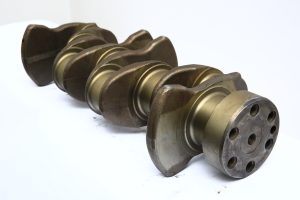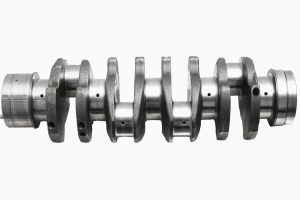Crankshafts are at the heart of gasoline automotive and motorcycle engines, playing a critical role in converting linear motion into rotational motion. But what exactly is a crankshaft, and how does it contribute to the overall performance and efficiency of an engine? In this article, we will explore the functions, advantages, and user experiences of crankshafts, as well as their classifications, materials, and manufacturing processes, specifically in the context of gasoline-powered engines.
The Key Role of Crankshafts: At its core, a crankshaft is responsible for transforming the linear motion of the engine’s pistons into rotational motion, which ultimately drives the vehicle’s wheels. By harnessing the power generated during the combustion process, the crankshaft ensures that the engine operates smoothly and efficiently.

Advantages of Crankshafts: A well-designed and properly maintained crankshaft offers several benefits, including:
- Enhanced Engine Performance: A high-quality crankshaft can improve power output, torque, and overall engine responsiveness.
- Increased Fuel Efficiency: By optimizing the conversion of linear to rotational motion, crankshafts can contribute to better fuel economy.
- Reduced Engine Vibration: Advanced crankshaft designs can help minimize engine vibrations, leading to a more comfortable driving experience.
User Experiences with Crankshafts: Many users have reported noticeable improvements in engine performance and fuel efficiency after upgrading their crankshafts or maintaining them properly. Smoother engine operation and reduced vibrations are also frequently cited benefits of investing in a high-quality crankshaft.
Crankshaft Classifications: Crankshafts designed for gasoline engines can be classified based on their design and construction. The most common types include flat-plane and cross-plane crankshafts. Flat-plane crankshafts are typically used in high-performance engines, while cross-plane crankshafts are more common in V8 engines, providing better balance and reduced vibrations.

Crankshaft Materials: Crankshafts are typically made from cast iron, forged steel, or billet steel. Cast iron crankshafts are budget-friendly and suitable for low-performance engines. Forged steel crankshafts offer increased strength and durability, making them ideal for high-performance applications. Billet steel crankshafts are custom-made for specific applications, providing the highest level of strength and precision.
Crankshaft Manufacturing Processes: The manufacturing processes for crankshafts include casting, forging, and machining. Casting is a cost-effective method suitable for mass production. Forging offers improved strength and durability, while machining ensures precise dimensions and surface finishes.
In conclusion, understanding the role of crankshafts in gasoline engines and their associated advantages is essential for optimal performance and maintenance. By exploring the various classifications, materials, and manufacturing processes, you can make informed decisions about your engine’s components and enjoy a smoother, more reliable driving experience.
